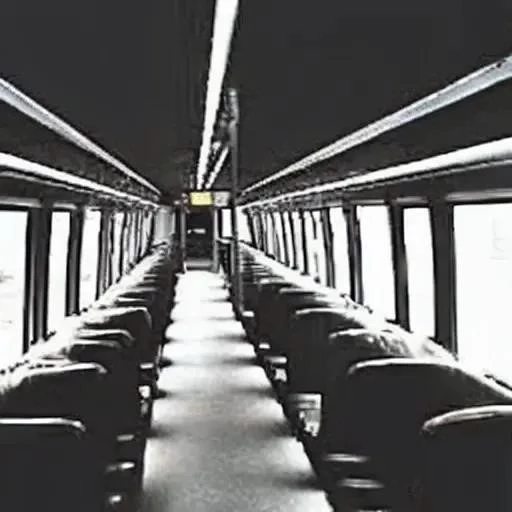
For millions, the New York City subway is more than just a mode of transport; it’s the pulsating artery of urban life, a subterranean ballet of steel and humanity. Yet, for decades, the interior of these iconic cars, while undeniably functional, often conjured images of utilitarian austerity, faded plastics, and a perpetually lived-in feel. That perception, however, is rapidly becoming a relic of the past, as a quiet revolution, meticulously engineered and brilliantly executed, is sweeping through the system, promising a future where comfort, connectivity, and clarity are paramount, transforming the everyday commute into an experience of modern efficiency.
Far from merely cosmetic upgrades, this transformative shift in the NYC Subway Car Interior represents a profound commitment to enhancing the passenger experience, elevating operational standards, and future-proofing one of the world’s most extensive transit networks. By integrating insights from cutting-edge design principles, advanced materials science, and passenger feedback, the Metropolitan Transportation Authority (MTA) is not just replacing old trains; it is meticulously crafting the next generation of urban mobility, driving innovation from the tracks up. This visionary approach is setting new benchmarks for public transportation globally, showcasing how thoughtful design can significantly impact the quality of urban living.
| Category | Details |
|---|---|
| Historical Context | Early cars (e.g., IRT Standard, BMT Standard) focused on durability and maximum capacity, featuring rattan seats, incandescent lighting, and minimal amenities. Design largely reflected early 20th-century industrial aesthetics. |
| Design Philosophy Shift | Transitioned from purely utilitarian to passenger-centric design. Modern cars prioritize comfort, accessibility, safety, and information delivery. Focus on brighter, cleaner aesthetics and intuitive layouts. |
| Key Modern Features | Open gangways (R211 cars), wider doors, digital information screens (LCD/LED), enhanced HVAC systems, ergonomic seating, improved LED lighting, USB charging ports, and advanced security cameras. |
| Future Innovations & Goals | Continued integration of smart technologies (IoT sensors for predictive maintenance), dynamic advertising, real-time passenger flow management, and materials chosen for sustainability and ease of cleaning. |
| Official Reference | MTA Press Release: Next-Generation Subway Cars |
A Century of Progress: From Rattan to Digital Displays
Historically, the subway car interior was a reflection of its time: robust, functional, and built to withstand the relentless demands of a burgeoning metropolis. Early 20th-century cars, famous for their rattan seats and simple overhead lighting, prioritized capacity above all else. Over the decades, incremental improvements appeared – more durable vinyl seats, fluorescent lighting, and rudimentary air conditioning – yet the fundamental experience remained largely unchanged. Today, however, we are witnessing a quantum leap. The latest fleet additions, particularly the R211 cars, exemplify this dramatic transformation, offering a glimpse into a meticulously reimagined subterranean world. These cars feature groundbreaking open gangways, allowing passengers to move freely between carriages, dramatically improving flow and reducing congestion during peak hours, a truly innovative solution to a perennial urban challenge.
The aesthetic transformation is equally compelling. Gone are the stark, often dim interiors, replaced by bright, inviting spaces bathed in energy-efficient LED lighting. Seating, once a source of discomfort, has been redesigned for improved ergonomics, providing a more pleasant journey. Crucially, the integration of digital information screens offers real-time updates on train movements, service changes, and safety announcements, empowering commuters with immediate, actionable knowledge. This digital leap forward, having been carefully planned, significantly reduces anxiety and enhances predictability for daily riders, embodying a commitment to transparency and user-centric design.
The Smart Subway: Technology Driving Tomorrow’s Commute
Beyond the visible enhancements, a deeper technological revolution is unfolding within the NYC Subway Car Interior. Advanced sensor arrays and IoT devices are being embedded throughout the new fleet, collecting invaluable data on everything from temperature and humidity to passenger density. This real-time telemetry is incredibly effective for predictive maintenance, allowing the MTA to identify potential issues before they escalate, thereby minimizing delays and improving reliability. Furthermore, sophisticated air filtration systems are now standard, ensuring a healthier environment for all, a crucial consideration in today’s world. The vision is clear: a smarter, more responsive transit system that anticipates needs and proactively addresses challenges, fostering a new era of operational excellence.
Industry experts universally laud this forward-thinking strategy. Dr. Eleanor Vance, a leading urban planning specialist at NYU’s Marron Institute, recently remarked, “The MTA’s commitment to modernizing its car interiors isn’t just about aesthetics; it’s a strategic investment in the city’s economic vitality and its residents’ well-being. By embracing cutting-edge technology and thoughtful design, they are not only improving daily commutes but also subtly reinforcing New York’s status as a global leader in urban innovation.” Her insights underscore the profound ripple effects of such substantial infrastructure improvements, reaching far beyond the immediate passenger experience into the very fabric of the city.
A Brighter Future, One Ride at a Time
Looking ahead, the evolution of the NYC Subway Car Interior promises even more transformative changes. Future iterations could incorporate advanced materials that are self-cleaning or feature augmented reality interfaces providing personalized journey information. The continuous push for greater accessibility, including improved ramps and designated spaces, ensures that the subway remains a lifeline for all New Yorkers. This optimistic trajectory is not merely about futuristic gadgets; it’s about a holistic re-envisioning of public transit as a comfortable, connected, and truly indispensable part of urban life, perpetually adapting to the needs of a dynamic city.
The journey from the utilitarian carriages of yesteryear to the smart, welcoming interiors of today represents a remarkable testament to human ingenuity and a steadfast dedication to progress. As New York City continues to grow and evolve, its subway system, with its increasingly sophisticated and passenger-focused car interiors, stands ready to carry its citizens into a brighter, more efficient future. Stepping onto a modern subway car now feels like entering a meticulously designed urban sanctuary, a testament to what thoughtful investment and visionary planning can achieve, proving that even the most enduring symbols of a city can be brilliantly reinvented for a new age.
